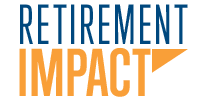April 17, 2024 @ 1:30 pm – 2:15 pm
New entrants into the workforce are facing unique pressure with housing, student loans and cost of living costs increasing significantly. Join us to learn how to set priorities as you begin your career to help ensure that you are making smart money decisions.
Key Takeaways:
- Learn the basics of budgeting
- How to prioritize your financial options
- Understanding your credit and making it work for you



